Back in 1985 Classic Coke was a confusing fiasco when it replaced New Coke, which had replaced Coca-Cola. The term “Classic” is supposed to refer to something that is timeless, with an air of tradition, perhaps even a masterpiece. Smith & Wesson’s Classic revolvers are even more bewildering since S&W has used the term at least three times.
So Many “Classics” it’s Confusing
The Springfield, Massachusetts gun maker’s most recent use of the “Classic” title is the Model 19 Classic in .357 Magnum. They have been using the term when they bring back revolvers that have been missing from their catalog for a while, such as the Model 36 Classic or Model 27 Classic. The guns are not made the same way they were many years ago (with one-piece pinned barrels, recessed cylinder chambers, and dare I mention that their frames were unmarred by the internal lock hole), but their model numbers and overall appearance are similar enough.
There was another line of “Classic” revolvers with wood grips made in the early 2000s and throughout that decade. Examples are the Model 10 Classic and Model 40-1 Classic (both available with case hardened frames by Turnbull Restoration), among others over the years. Just to muck up the terminology, S&W also featured a “Heritage” series of various caliber revolvers made for Lew Horton Distributors during the same decade. They were certainly touting these terms and I’m surprised they didn’t start adding the idiom “vintage style” to some of their firearms.
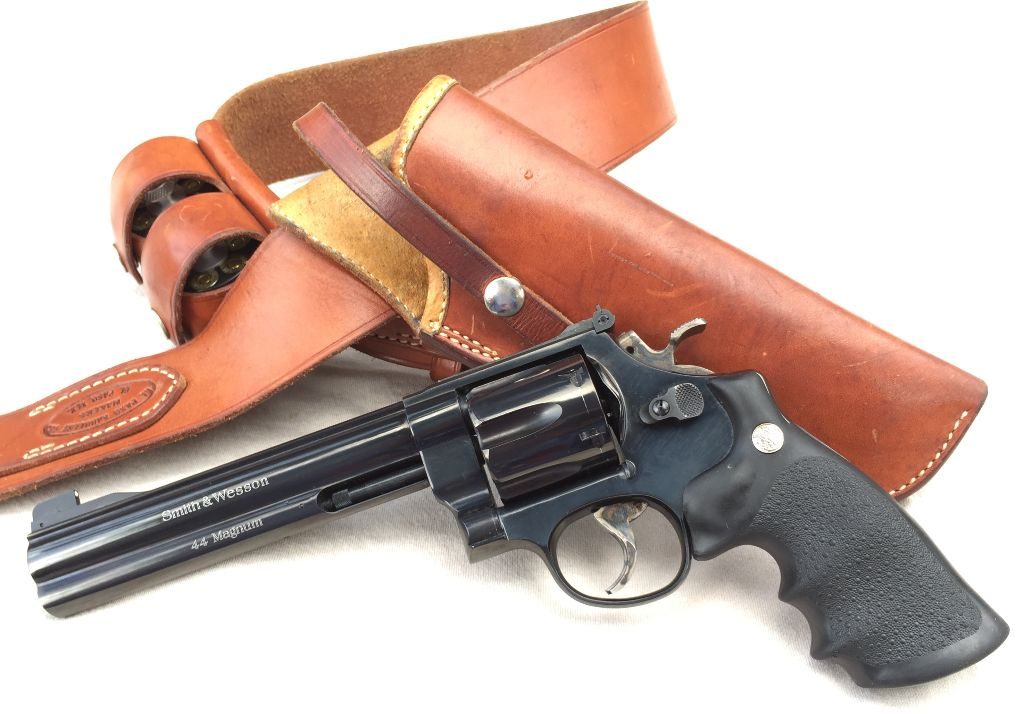
My close friend Karl shot my Model 29-2 at my dad’s range in the woods next to my parents’ log cabin back in the early 1990s. Karl always shot well, but he shot my big 6 ½-inch barrel .44 particularly well. He was impressed with the “Dirty Harry” revolver and resolved right then and there to obtain one of his own. I’d bought mine from a dispatcher at my department and it was the proverbial .44 Magnum that came with a box of fifty cartridges, only six of which had been shot. The dispatcher had fired six shots and then never touched it again. He was happy to sell it and I was happy to buy it.
My buddy Karl walked into the local gun store and spotted a brand new Model 29 Classic DX displayed on their glass shelves. He purchased it and when I first saw the big double action sixgun, I remember thinking that this was something special. I also remember thinking that it would probably not be manufactured for very long and my friend was wise to make it his own. The DX turned out to be one of the best shooting revolvers from S&W and it was produced for only two years during 1991 and 1992.
The Model 29 Classic (Non-DX)
The Model 29 “Classic” model was a large N-Frame revolver with a full length under lug all the way out to its muzzle, adding balance and weight to subdue recoil like the smaller 585/686 L-Frame revolvers with their .357 Magnum cartridge. The 29 Classic was built on a round butt N-Frame and had a handsome polished blue finish. Interchangeable front sights (utilizing a spring loaded plunger located at the muzzle, just above the bore) could be purchased separately. The white outline micrometer click adjustable rear sight (the frame was drilled and tapped under this sight for a scope mount), .500” target hammer, .400” serrated target trigger were standard features along with Hogue rubber grips.
The Smith & Wesson Model 29 Classic DX
This is where is gets a little more confusing. Many shooters have made the mistake of seeing a 29 Classic and thinking that it was the even more rare and desirable 29 Classic DX. Those two letters make a big difference.
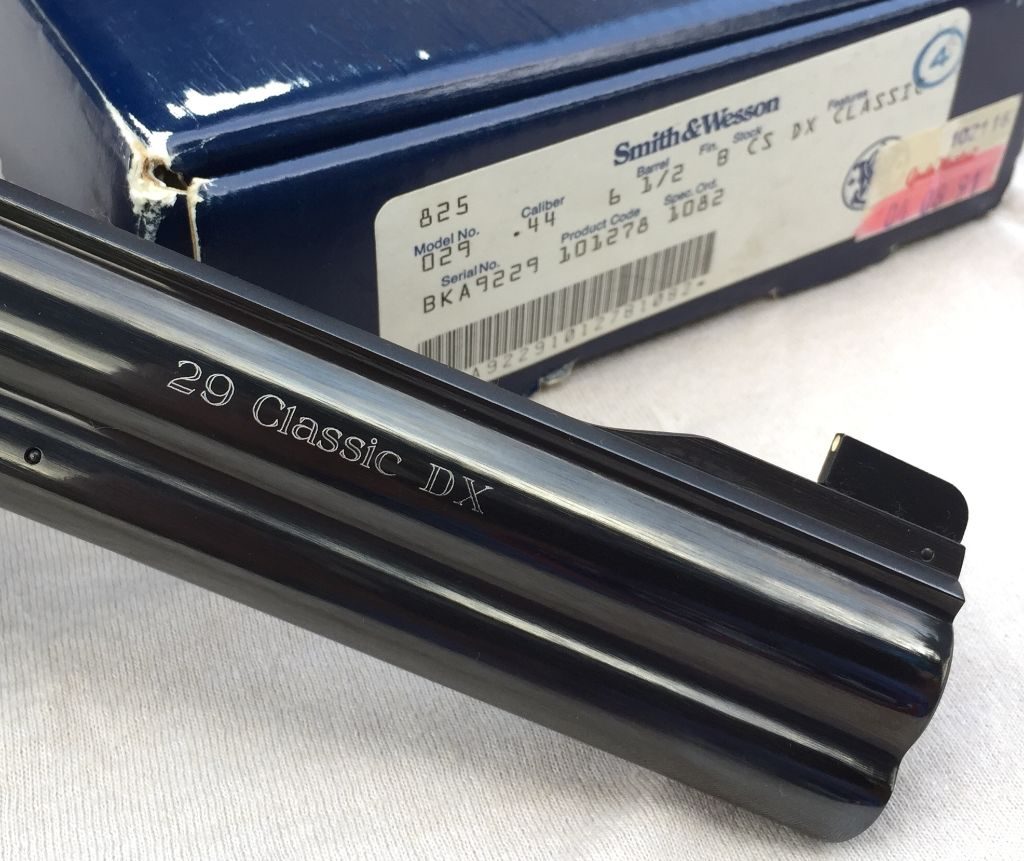
The DX had the same features as the 29 Classic except that it included a total of five interchangeable front sights (red ramp, black ramp, patridge, white dot, and gold bead) and a set of combat Morado wood stocks in addition to the Hogue rubber grips. This Deluxe .44 Magnum had the additional two letters Lasersmith engraved on the right side of the barrel, which reads, “29 Classic DX.”
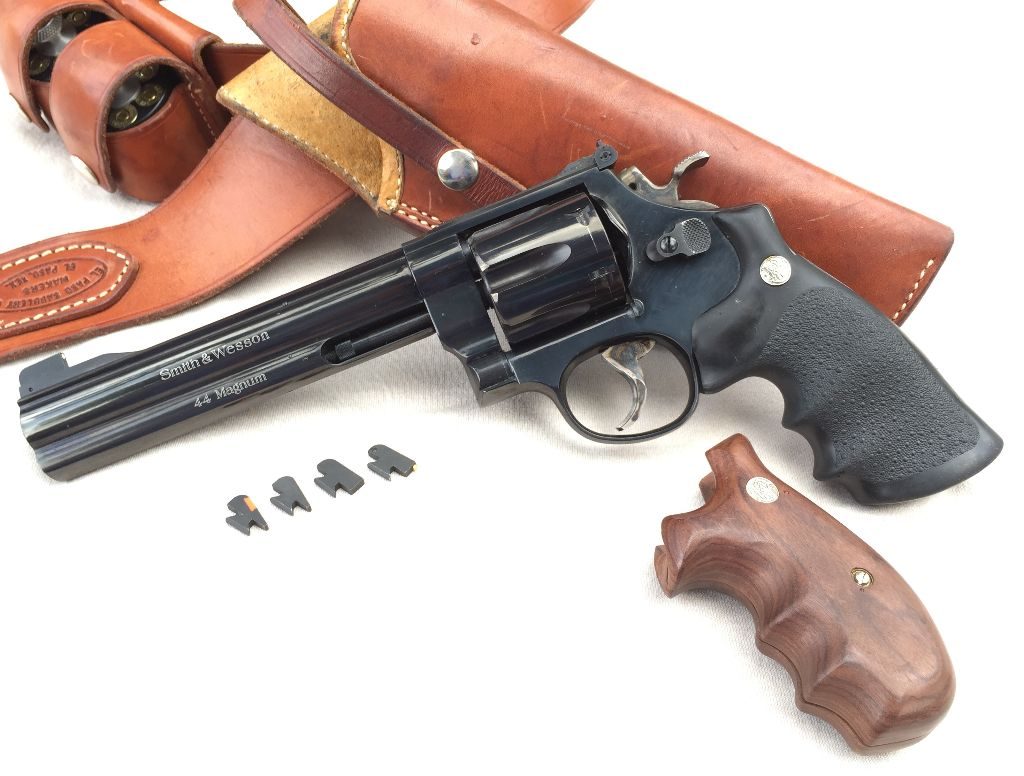
Factory Test Target
In addition to the usual cleaning rod and instruction manual, there was a very special additional item that came in the box with each DX. A hand dated and signed factory test target.
The story goes that all of the Model 29 Classic revolvers were test fired at 50 yards from a machine rest. The targets were saved for those that grouped five shots under 1 1/2-inches and those exceptional handguns became exclusive DX models, uniquely marked on their barrel with their accuracy achievement.
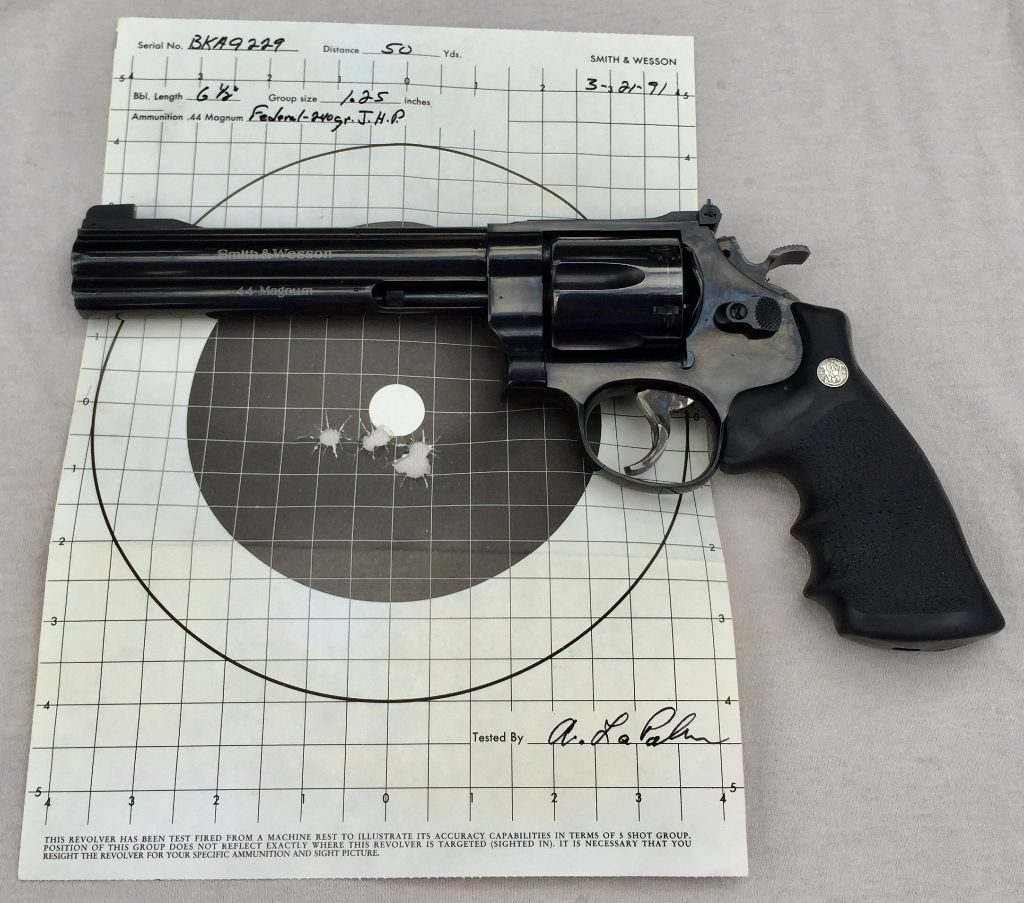
Guns with factory test targets have always curried a special place in my heart. My father had a pre-WWII Colt National Match 1911 .45 that came with a test target in its original box. Walther often included them and my 1988 PPK has a test target in its original box. Even today’s PPQ M2 5-inch model comes with a target punched through by fired bullets. Sig Sauer’s West German P-series pistols of the late 1980s came with them as well. It’s a practice that is almost unheard of these days.
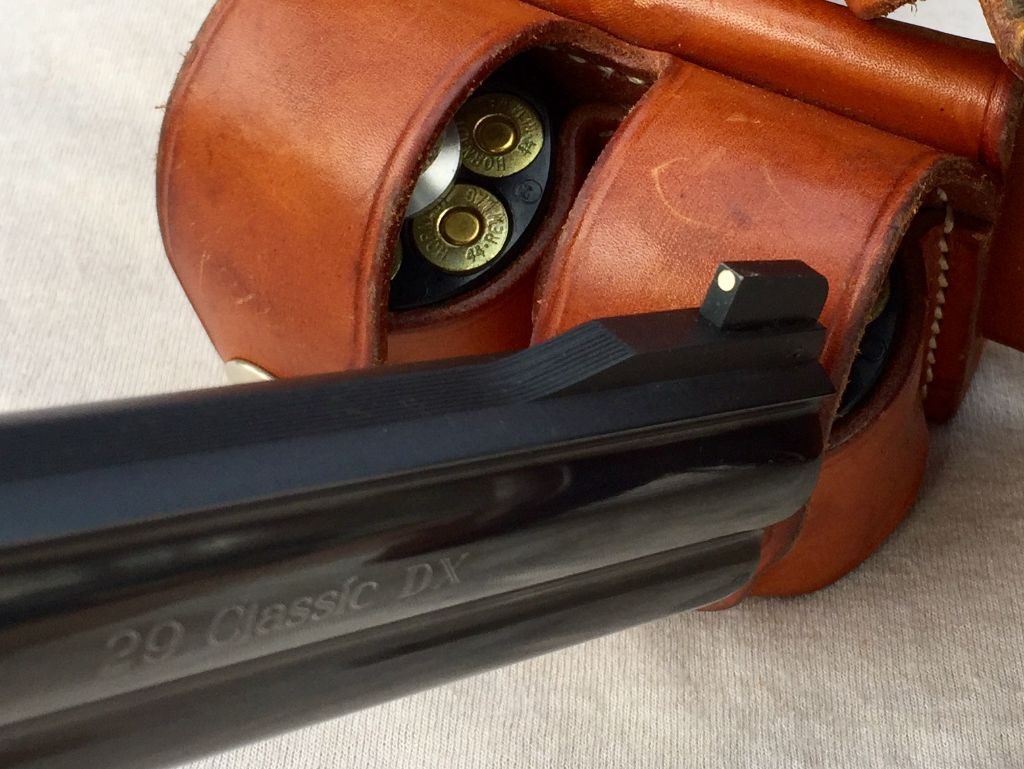
Think for a moment about how factory test targets were accomplished. Imagine running a target 50 yards down range. Then shooting five shots at it. Then bringing the target back, hand writing the serial number and date and signing it. Then placing it in the box with the correct gun. One target at a time or multiple targets, either way it’s a ton of labor-intensive work.
The target that accompanied this particular DX states that the gun was secured in a machine rest. That’s a lot of work to tighten the revolver down to where it will not move at all in the rest. Then all five shots have to be fired, cocking the hammer and using the contraption to pull the trigger. The test target measured all five shots in a group of 1.25-inches at 50 yards. Taking the human element out of the equation resulted in an objective measure of the revolver’s true capability. That’s a tight group at 50 yards from a 6 ½-inch barrel! This 29 Classic certainly earned its DX title.

My Friend’s Model 29 Classic DX
My friend has fired both .44 Special and .44 Magnum cartridges with excellent accuracy. Sometimes standard production revolvers get lucky and the barrel-cylinder gap, forcing cone, and cylinder bore alignment magically come together with unusually superb accuracy. The DX guns were hand selected due to these charmed coincidences that coalesced into outstanding precision.
The blue finish shines on the DX and the case hardened hammer and trigger contrast well. The balance with the 6 ½-inch barrel is excellent, with the heavy full-length under lug contributing to its heft. The trigger pull is smooth and relatively light in both single and double action. The serrated trigger is better suited to single action firing when cocking the hammer first. Lateral movement of a shooter’s trigger finger is not very comfortable after a couple cylinders full of ammunition.
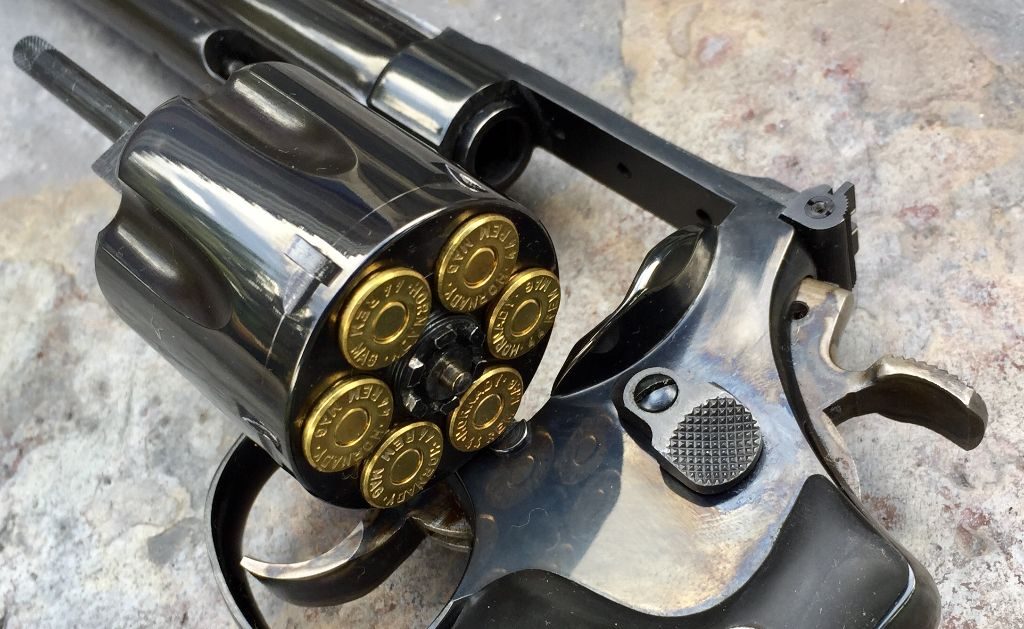
The Hogue rubber grips are stippled and their finger grooves fit my big hands well. They leave the back strap open for a shorter trigger reach, but that means full power .44 Magnum loads transfer their recoil directly into your palm. The wood grips are round butt style with finger grooves and the same open back strap design as the rubber grips. Both sets have S&W medallions for that factory appearance. The wood grips felt very small in my hands and I’ve never shot the gun with them on. The rubber Hogues give a square butt feel to the round butt frame and felt much better.
The Lasersmith markings are handsome, with a white paint fill that hasn’t worn off, even after many applications of Hoppes No 9 solvent and gun oil. This particular gun has a turn ring on the cylinder that is pretty much unavoidable on S&Ws. The writing is striking with Latin style lettering. My friend ordered an El Paso Saddlery Threepersons style crossdraw leather holster with a button strap, a matching belt, and a double speedloader case. He has carried this gun as backup when wild boar hunting. The crossdraw holster keeps the gun at the ready when seated and out of the way when shouldering a rifle.
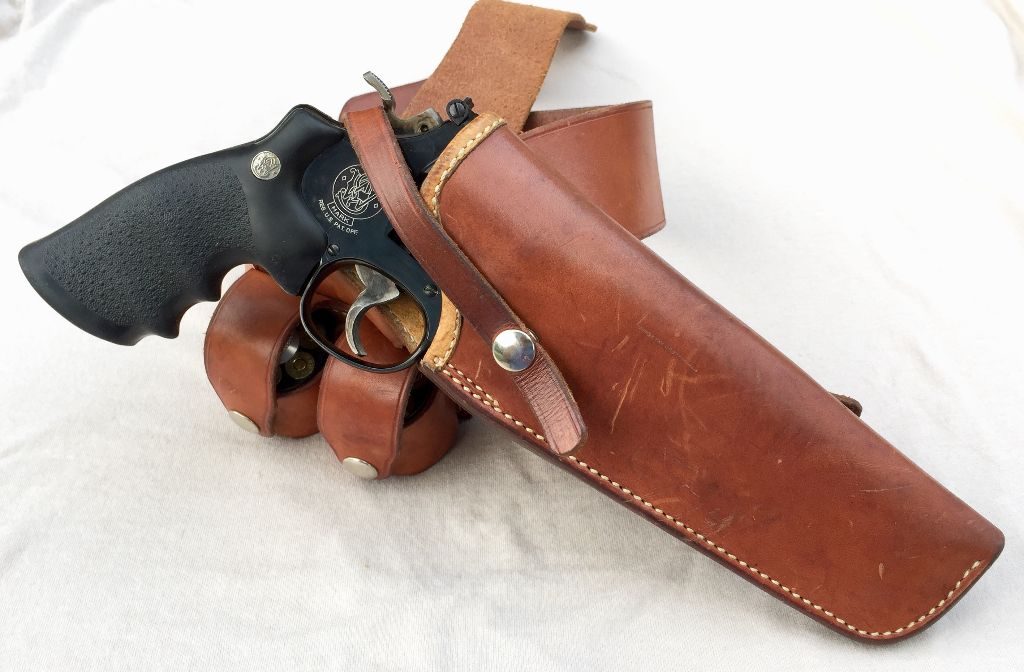
My friend’s revolver is, in fact, a Model 29-5, meaning it incorporates changes to the Model 29 that were made for the fifth time since the model name of “.44 Magnum” (introduced in 1955) was changed to the numerical 29 in 1957. S&W adds a “dash number” (e.g. 29-1, 29-2, etc) each time they change something about the gun. They are up to at least a 29-10 today.
According to the Standard Catalog of S&W, 4th Edition (SCSW4) by Jim Supica and Richard Nahas, 5-inch barrel DX revolvers carry a 50% premium in price and the 8 3/8-inch carries a 10% premium over the $1500 value of the 6 ½-inch barrel.
Stainless Steel DX’s, Too
Stainless steel adaptions of blued steel S&W revolvers are usually designated by the addition of the number 6 at the beginning of the model number. So the Model 29 becomes the Model 629 in this case. There was a DX sub-model of the 629 Classic just like the blued Model 29. It was also introduced in 1991 and production continued until 2002. The dash numbers were 629-3 until a change in 1993 became the 629-4, a 629-5 in 1997, and a 629-6 in 2001 (the infernal, I mean internal lock!). The 629 DX is more common than the 29 DX due to the fact that it was made for a total of ten years instead of under two for the blued gun.
The same three barrel lengths were produced the same as the 29 DX and the 5-inch carries a 50% premium since, like the blued model, it was apparently made in much smaller numbers than the other two lengths. The SCSW4 gives a value of $1200 for the 6 ½-inch barrel stainless steel revolver. The 629 Classic DX came with a total of eight front sights and they came in a neat little leatherette black box with the gold S&W logo imprinted on top. The red lined box held each of seven additional interchangeable front sights lined up in two little rows. Some 629s were made with un-fluted cylinders.
Model 29-5 and 629-3 .44 Magna Classic
There was also a 7 ½-inch barrel blued Model 29 called the Magna Classic. It too came with five front sights in the fancy little S&W box, a test target, a registration certificate, and a cherrywood presentation case. “1 of 3000” was Lasersmith engraved on the barrel and it wore a special high polish blue. According to the SCSW4, it was made in 1990, but only 1800 were made. That’s because 1200 stainless steel Model 629 Magna Classics were also made with a wonderfully high polished finish and with the same paraphernalia and fancy case.
Perusing a 29 Magna Classic for sale on Gunbroker, I noticed the test target’s grouping had a considerably larger spread than Karl’s DX. It noted at the top that the revolver had fired five shots into a 2 ¼-inch group. Sorry, Magna Classic, you’re a great looking gun in a really nice case, but objectively you just don’t shoot as well as a DX.
These “Classic” .44 Magnum hand cannons show that the DX is still an exceptional Smith and Wesson revolver.
Prices and Collectibility
Looking at prices on Gunbroker.com, some sellers are asking much more than what the SCSW4 claims as a fair price. Lofty hopes and dreams aside, actual selling prices are dictated by condition and the inclusion of the factory accouterments. Factory boxes and papers are desirable to both collectors and shooters alike. When it comes to a revolver like the DX, I wouldn’t even think about buying one without the factory test target. That signed and dated sheet of paper with five bullet holes is what places this firearm in an exclusive category.
Some guns offered for sale on Gunbroker do not have the target and some do not have the front sights or the extra grips. The fact that these guns include a factory test target makes shooting them all the more fun. And no one can say that the gun is worth less because it has been shot. The DX was never “unfired” and has a test target to prove it!
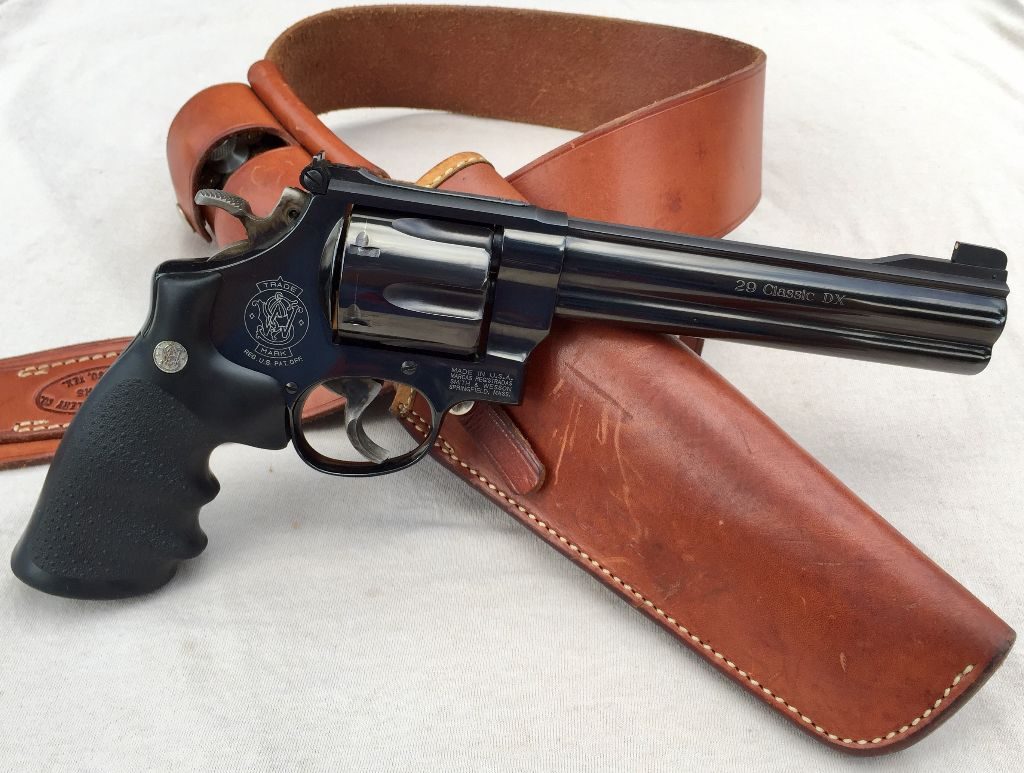
Just keep in mind that the Classic and the Classic DX are two different guns, separated by those two special and distinctive letters on the barrel and that test target. The term Classic confuses some buyers. Some enthusiasts claim that their standard Classic shoots just as good as a DX and I don’t mean to doubt or disparage them. But S&W took the time to shoot the test targets before applying the DX nomenclature to the right side of the barrels of these scarce revolvers. Those five 50 yard shots objectively set the DX apart from the other “Classics, “ even the Magna Classic (which does not include the DX nomenclature).
My friend’s first year production Model 29 Classic DX is a shooter but it retains its value due to his foresight in keeping the box, papers, grips, and sights all together. For a shooter, a standard 29 or 629 Classic is an accurate .44 Magnum that will last a few lifetimes. But for the discerning RevolverGuy, the handsomely blued Model 29 Classic DX is a special gun that will be an heirloom for generations.

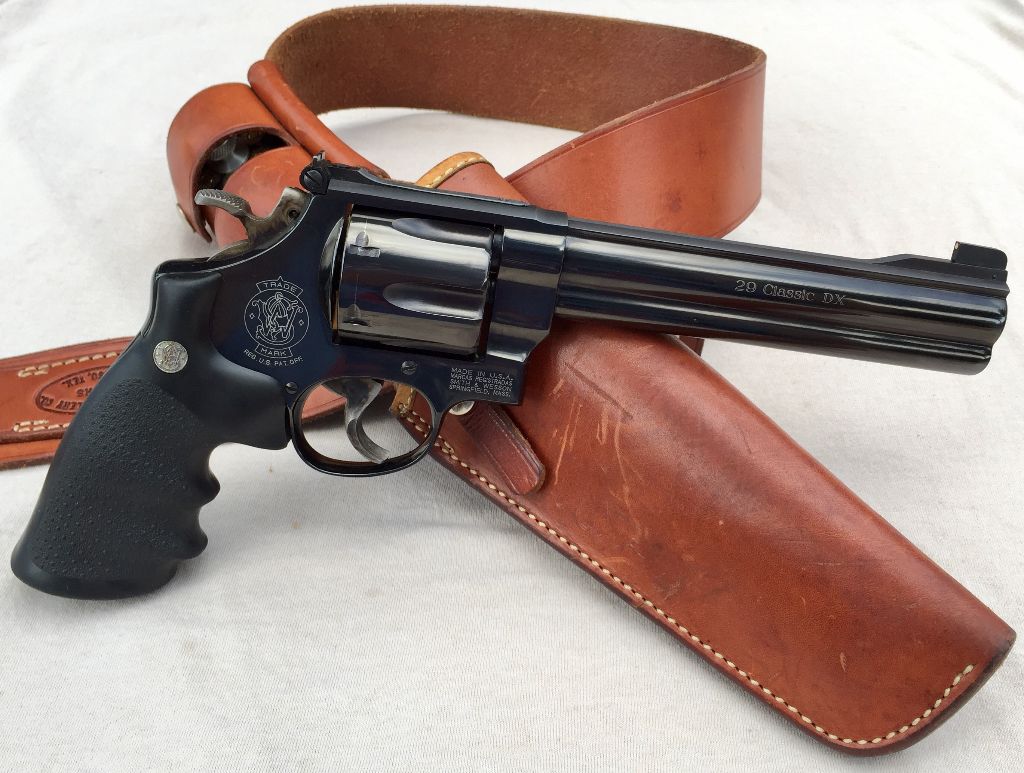
Thank you. Never knew about this model, though I enjoy greatly the family’s 629, lock and all. I wish the big boys made wheel guns with this attention to detail today. I would pay extra, as I did for my Kimber K6S.
I love the fact that we share the same opinion of the lock! Thanks for the look at this beautiful gun, and for helping to clear up some of the “Classic” confusion! I have the same thoughts every time I see the “M&P” logo on a plastic fantastic!
Had (and lost) a stainless 5″ version of the same gun, the 629 Classic DX in the early 1990s. Talk about sweet and a joy to shoot, albeit with somewhat reduced reloads. Even with full power magnum loads, you knew you had some power in your hand.
Pity S&W didn’t continue it.
Nice review. There is a bit of misinformation about the Classic DX that probably stems from the internet sellers asking those lofty prices for them.
All of the classics weren’t tested with the most accurate being labeled as DX, rather the DX were simply “deluxe” versions of the classic that included a. Morado wood grip, extra sights and yes, a test target that validated accuracy with factory loads in a ransom rest.
However, there is no evidence that any other of the classic guns were not capable of equivalent accuracy (I have several of both and have not noticed any greater accuracy from a DX) , it’s simply that the DX was marketed as including a test target and met the accuracy standard.
Long story short, the up charge for the DX’s was for the extras included (grips, sights, time to include test target) but they weren’t necessarily any more accurate than any other classic gun, they were simply verified of the accuracy standard.
They are quite collectible due to the limited production numbers.
AJ, nope…
The DX was, in fact, hand selected for the revolver’s objectively proven performance as documented with its included test target. My friend’s DX is also lettered from Roy Jinks, S&W’s historian. Straight from S&W’s historian, “In January 1991 Smith & Wesson introduced a special series of Model 29s called the “.44 Magnum Classic DX.’ This was a specially selected group of revolvers that were selected for their extra accuracy.” He goes on to further in the letter to refer to the DX as a “hand selected revolver.”
-Steve
Hey Steve! I didn’t realize you replied back in 2019! We can respectfully agree to disagree on this as fans of these guns, but if you have any evidence that the DX (meaning deluxe) guns were “hand selected for their accuracy”, please let me know. You can believe the experts you want to believe, and I have mine as a SWCA member. In a way, these WERE hand-selected in the sense that they were pulled, lasered, test-targeted, etc., but it is a pure myth that they were culled from some larger population as being “more accurate” than other non-DX guns. The DX guns were simply verified to meet the accuracy standard FROM THE FACTORY. They were not performance center guns in any way, shape or form, nor were they the MOST acccurate guns of whatever population of guns we are discussing.
For the record, I am not criticizing these guns in any way, just trying to distinguish fact from fiction. As a collector and shooter, I have several DX and non-DX guns and none of the DX guns shoot any better than the others of this period. Realistically, for these guns to actually shoot “better” they would have to be tuned to some degree to yield that result. The DX and non-DX guns were all produced the same exact way, with the same exact production tolerances.
I think you have to get past the marketing of these guns vs the actual facts and let’s also consider feasibility and economic truth while we are at it. It is not even FEASIBLE that all of these guns were “tested” on a test target and then S&W evaluated all of the targets to pick “the best of the best!” Its not even remotely realistic. Secondly, lets talk economics. The DX guns were originally priced about $150 more than their non-DX counterparts. The up-charge was for wood combat grips, extra sights, test target and special laser engraving “DX”. There is NO POSSIBLE WAY it would be economically feasible to perform whatever “hand-selection” process with that small of an up-charge on these guns.
Lastly, i’ll actually leave you with the exact verbiage from the 1992 S&W catalog where these were marketed. “For the ultimate in accuracy and performance, the new DX is a sure bet. [here’s the specifics] In addition to the standard features of the Classics, the DX offers two sets of grips, and comes with 5 interchangeable front sights and proof target. [IOW’s its the ultimate in accuracy and performance because of these additions, and that is all]
So, I enjoy these guns from a collectors standpoint, but will agree to disagree with you.
Thanks and best wishes…
AJ
Correct Steve. I spoke with Roy Jinks at the NRA show a few years back about my 29 DX (8 3/8 barrel) and he told me the same thing.
I scoped it with a Leupold 4x and the groups I’ve shot with handloads are incredible. 🙂
Speaking with Roy in person is a memorable occurrence, right Walt? I bet your 8 3/8″ DX with a Leupold on it and shooting your handloads is truly incredible!
I have a 29-5 Classic DX with all the accessories, including box and target. It’s the 6 1/2 inch. I don’t think it’s been shot other than test firing. Looks mint to me. I also bought wooden conversion grips (round to square butt) from Altamont Grips. They are a supplier for Smith and Wesson regular production, and have the S&W logos on the grips – and they look super sweet on the gun. Would any venture a guess on how much this gun is worth. I have read the original Morado wooden grips are worth about $300 alone.
I have the identical gun. Complete with box, papers sights, tools and grips. Shot around 1 box of ammo. I treat it with museum wax, looks awesome for a safe queen. It took a few years for this gun to appear in the Blue Book but when it did I was glad I kept it.
I’d like to add something to my above comment. This is my favorite pistol I have ever owned – by far. And I have read just about every review and critique of the Classic DX possible. Your article is the most detailed and thorough I have read. It sticks to the facts with no guessing and little opinion. And validated what I thought about how rare and collectable the pistol is – and will be. I also believe the 29-5, in any variant, is the best Model 29. It incorporated all the strengthing features and updates prior to going to MIM and the lock. What are your thoughts on that? Thanks for time and expertise on this little discussed topic!!
I’m so glad you enjoyed the review Christopher. It is one of the revolvers out there with such a unique background that it needed to be brought to the forefront a little bit again. I think you’re absolutely correct about the DX being the “ultimate” Model 29 when it comes to putting all the features together along with extreme accuracy. Some may prefer the Model 29 from the 1970s because of its traditional look (and I’ve got a 1976 6 1/2″ Dirty Harry gun), but the underlug and other pre-MIM parts make it special. Of course, the fact that it’s a pre-lock gun certainly helps make it a “classic” too! As to value, its rarity and provenance with the test target adds a lot of interest. The problem with the gun is that too few people know about it. Those who do and want one will be willing to pay more. I’ll say two things about prices on this gun. First, quality photos and description on Gunbroker, along with a penny auction with no reserve will get the highest bids. Very few people are willing to do this though. There are asking prices that never sell, but a penny auction with no reserve will always sell a gun for exactly what it was worth to those who were willing to pay for it. The second thing is that your gun will only go up in value. It used to be said that the only guaranteed investment was real estate, but that is no longer true. Gold fluctuates too much these days. But fine, collectible firearms have yet to go down in price.
Steve – I agree with your statement “too few people know about it”. I think the biggest problems are its rarity and age, along with the confusion with other “Classic” lines from S&W (which are reproductions of older models w/lock). I didn’t even know what it was when I bought it about 5 years ago. I just had a hunch it was worth something. After some research, I found out that it was a real gem. I highly recommend the Altamont wooden conversion grips (round to square). They are actually S&W approved grips w/logo. It’s the only way to get the real Dirty Harry look to the gun – rubber grips don’t cut in the looks department. I would never sell the gun. Paid $900 for it. If forced to sell, it would take $1,500 to even get my attention. I look forward to any future thoughts and posts on the DX. Add me to your E-mail list for any future articles. Thanks alot.
So what is the value of a 29-5 classic , 6 1/2 barrel ,, in good condition???
Hi, Anthony. We don’t quote values here; there are just too many variables involved. I would find a reputable local gun shop, or compare prices with a site like Gunbroker. Thanks!
Ordered my 7&1/2″ 629 MagnaClassic 1 of 3000 after I read an article in G&A with 3 of them on the cover (at least I think it was a Guns & Ammo magazine). Anyway it’s easily the most accurate gun I’ve ever shot consistently putting 5 of 6 rounds in the same hole at 25 yards with open sights from a sandbag rest. One of the cylinders is off a hair resulting in one round always going 3/4″ high left. Marked it and dont use that hole anymore. If I had a nickel for all the quarters I’ve shot the center out of at 25yds I’d probably have about 2 bucks. Sweetest trigger too in single action, the gun fires before you even thought the trigger broke. Gorgeous highly polished SS is immaculate. Would never get rid of this gun. Before the MagnaClassic had a 6″ Model 29 Classic Hunter highly polished blue w/unflutted cyl. and 4 position silhouette sights that kept a pretty tight group itself. Never felt the need for a DX.
Brian — those sound like two fine S&W .44’s you mentioned. But it doesn’t take away from the rarity and accuracy of the Classic DX. The accuracy of the DX’s are unmatched by other Model 29 variants. But you can never go wrong owning any Smith and Wesson Model 29.
Steven,
I’ve had a couple of the 629 dx’s ,still own one,and they are great guns. The only thing I found confusing in your article is that you say they came in a red lined box with 8 front sights. Mine all came in a plastic s&w case with 5 front sights and 2 sets of grips. My 29 magna classic has the wood case and 8 front sights.
Interesting article, thank you very much for your effort. I am fortunate enough to have a DX 5″ that was made in 92, and bought new by me in 1995. 12 rounds fired through it. Mine came with 2 sets of grips( rubber and Movado combat), 5 sights, and the test target. It was shipped in a cardboard box. I have looked and have never seen another 5″. S&W was not able to give me any information on the quantity produced. Again, thank you
Blew up a Model 19 in 1982, since then have never trusted 6-shot Smiths with high pressure loads. (The 6-shot Smiths have their cylinder notches at the thinest point on the cylinder). That’s were the 19 came apart). I only fire light handloads through these guns, including the 29s. For this reason, I prefer my Model 24s. If you’re going to fire a light load, you might as well use a lighter, more elegant gun.
And in any event, I’ll usually take a Colt over a Smith…